BACK TO RESEARCH WITH IMPACT: FNR HIGHLIGHTS
Alzheimer’s disease (AD), Parkinson’s disease (PD) and Dementia with Lewy Bodies (DLB) are the most frequent age-related neurodegenerative diseases and causes of dementia. As of 2022, 8,000 people were affected by dementia in Luxembourg alone. Neurodegenerative diseases have no cure, and with treatment windows and options, remains a growing challenge for healthcare.
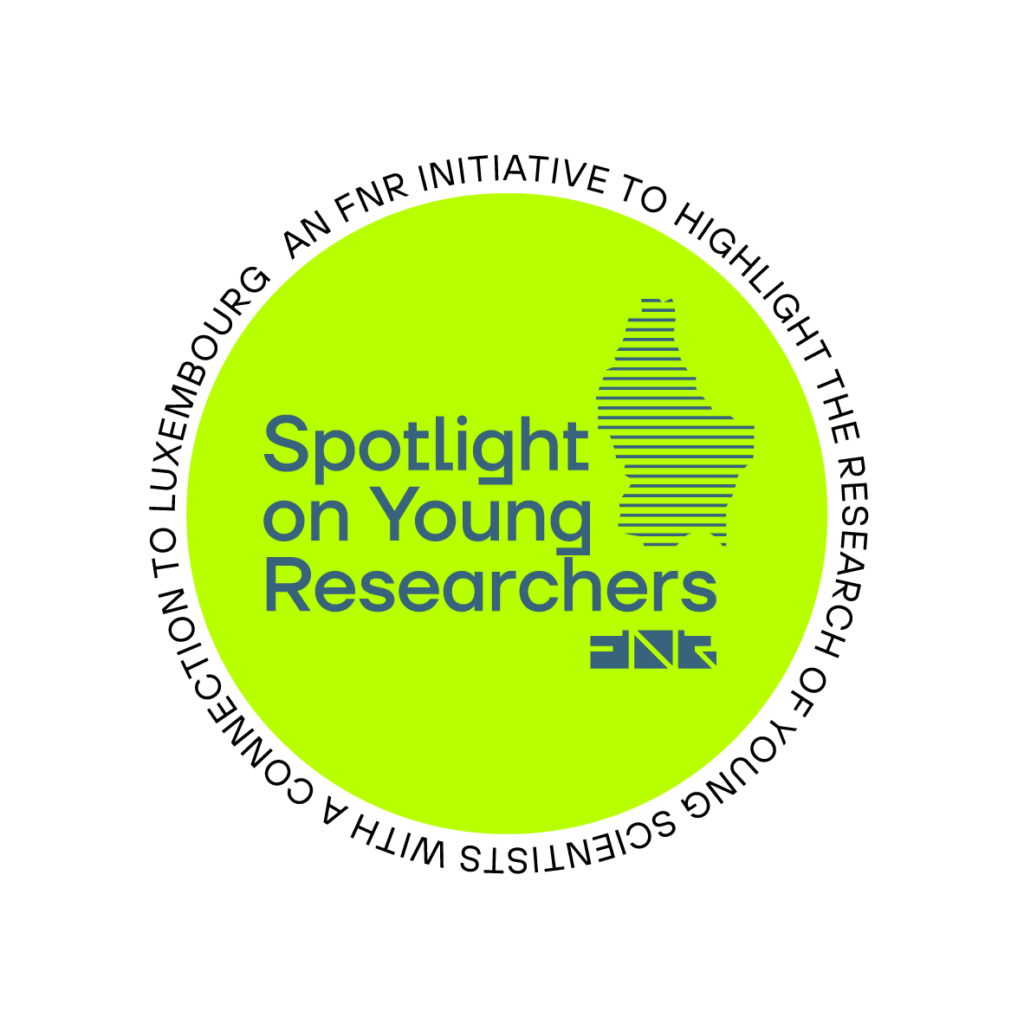
“Dear Dementia, it is now a year since my last letter to you, during which time we have had a number of encounters with each other. I sense you see this as a conflict; if so, some battles I have won, and in some you have gained an upper hand. But although your victories will leave a bitter taste, they will be short-lived.” This is an excerpt from a book by Keith Oliver, sharing his experiences of living with dementia, describing the struggles and helplessness that come with it.
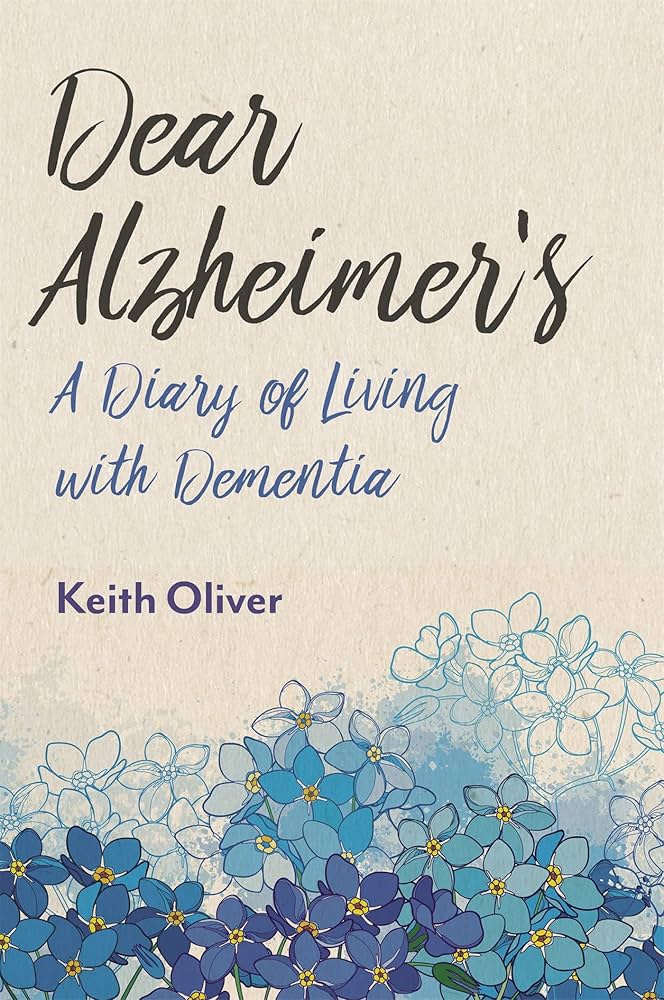

A growing medical and economic challenge
Even though there are multimodal treatment possibilities, neurodegenerative disorders are incurable to this day. Patients show only mild symptomatic clinical improvement, and this within a very narrow therapeutic window. The associated healthcare management is a growing medical and economic challenge.
“The human brain is a very complex organ in which not all processes and functions are discovered. Between individual patients the pathology and the corresponding symptoms are different,” explain Félicia Jeannelle, Sophie Schreiner and Mónica Miranda, researchers at the National Center of Pathology (NCP) working with the FNR PEARL Chair Prof Dr Michel Mittelbronn and Dr David S. Bouvier.
“The main challenge of our field is to understand the neurodegenerative diseases in their entirety. It is known that they are multifactorial diseases and several hallmarks have been already identified, however, we still have to understand their roles in the development and progression of these disorders. Furthermore, it cannot be ruled out that other yet unknown factors may also play a part in the development of these diseases.”
Research limited by complexity of human brain
The researchers explain that while the research and diagnostics of neurodegenerative diseases improve every year, the complexity of the human brain and the limited availability of human post-mortem tissue limit the research.
Researchers also use animal models since they are a useful resource to understand these diseases, but as there are strong differences to humans, it is essential to validate research findings by looking at human brains. Thanks to the collaboration of Prof Dr Michel Mittelbronn and Dr David S. Bouvier, the three PhD candidates, Félicia Jeannelle, Sophie Schreiner and Mónica Miranda, have access to a large collection of post-mortem human brains.


“Our group is in process to uncover new knowledge. We have the advantage to base our research on primary mouse cell culture (in vitro), mouse models (in vivo) and human post-mortem tissue (in situ). Our in vitro work focuses on the three main cell types of the brain (neurons, astrocytes and microglia) which allow us investigating the fundamental mechanisms and interplays behind these diseases in a dish.
“Furthermore, we collaborate with several brain banks in Luxembourg, Montreal, Paris, and the Netherlands, which provide us with the access to healthy, Alzheimer’s, Parkinson’s and Dementia with Lewy Bodies donated brains for post-mortem analysis.”
Félicia Jeannelle, Sophie Schreiner and Mónica Miranda are researchers at the National Center of Pathology (NCP) working with the FNR PEARL Chair Prof Dr Michel Mittelbronn and Dr David S. Bouvier. Learn more about their individual work below.
Understanding what’s behind brain cell dysfunctions
Félicia Jeannelle – a neuroscientist and PhD researcher at LNCP – has a focus on characterising the impact of the alteration of the noradrenergic system in brain cell dysfunctions and neurodegeneration and understanding its involvement in memory decline across the conditions of Alzheimer’s (AD), Parkinson’s (PD) and Dementia with Lewy Bodies (DLB).
Alzheimer’s, Parkinson’s and Dementia with Lewy Bodies have something in common: degeneration of the noradrenergic system, which plays a role in initiating and maintaining limbic and cortical stimulation. Noradrenaline (NA), the product of this noradrenergic system, is involved in key processes such as awareness, attention and memory. Due to its modulatory role of neuronal and glial cell activity and responses, it also plays an important role in the regulation of neuroinflammation and neuronal survival.
“Therefore, my research is focused on the characterisation of the modulatory role of noradrenaline on neuron and glial cell physiology and responses. Such characterisation in pathological contexts (e.g. AD, PD, DLB) is essential to possibly explain the impact of noradrenergic system degeneration on the vulnerability of certain brain regions (e.g. hippocampus, amygdala). Therefore, it may help clarify the onset of cognitive and behavioural phenotypes, such as memory decline or depression.” Félicia explains.
This insight would provide new insights into the understanding of the physiopathology of Alzheimer’s, Parkinson’s and Dementia with Lewy Bodies. It would also help in advancing therapeutic efforts against dementia progression.
“To do so, I’m working with primary mouse cells to try to understand the mechanistic behind the NA modulation as well as with post-mortem brain tissues from AD, PD and DLB patients, and age-matched control subjects, to define the alterations of the noradrenergic system within those disorders.”
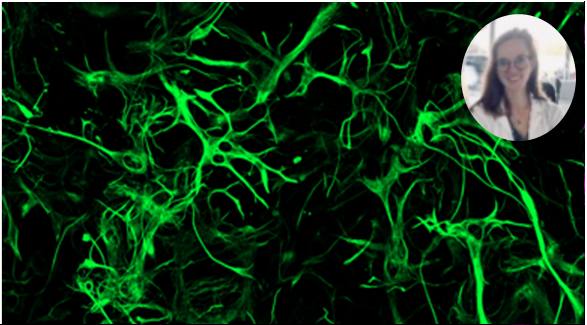
MORE ABOUT FÉLICIA JEANNELLE
What drives her as a scientist, and where she sees herself in 5 years
“Ever since I was a child, I’ve always been drawn to the sciences, especially biology. I discovered neurosciences during my university studies and was immediately fascinated by this organ. I like to think the brain as a black box that reveals some of its secrets but still hides most of them. Moreover, I was very curious to understand neurodegenerative diseases and especially the mechanisms responsible for brain imbalance that drives to such severe illness.
“That’s why I was drawn to the deeper study of the brain and decided to continue my studies with such a PhD project.
“I plan to stay in the research field as long as the passion remains, so in 5 years’ time I still see myself at the bench for fundamental research while mentoring future PhD students.”
What she loves about science
“What I like about research is that it never gets boring! With each new observation comes new and increasingly stimulating questions. But what I love most of all is the fact that we work with the infinitely small, with what we can’t see simply with the naked eye.”
On her research, peer to peer
“In AD, PD and DLB the early degeneration of the Locus Coeruleus, which is the main source of NA, has been shown during the first stages of the disease, leading to a progressive unbalance of this neurotransmitter levels, especially in brain areas associated with memory processes.
“On the other hand, NA is known to be a strong modulator of neurons and glial cells, especially astrocytes by modulating their metabolic functions for example, but also by promoting anti-inflammatory phenotypes and antioxidant responses. Therefore, this suggests that a progressive depletion of NA may alter the phenotype and responses of those cells.”
Towards neuroprotective strategies
Sophie Schreiner, biologist and PhD researcher at the NCP, is working to establish neuroprotective strategies, to prevent the untimely neuronal death and with the ultimate goal to prevent Alzheimer`s disease onset.
A main characteristic of Alzheimer’s, Parkinson’s and Dementia with Lewy Bodies is neurodegeneration that is caused by axonal instability, cellular dysfunction, and, ultimately, cell death.
“The identification of neuroprotective pathways is crucial for developing therapeutic strategies to reduce neuronal cell death and improve patients’ care,” Sophie explains.
By using human brain tissue and so-called “primary neurons” Sophie is able to study phenotypic discoveries in a cellular model, with the aim to identify genes and associated pathways exerting neuronal resilience in-vivo.
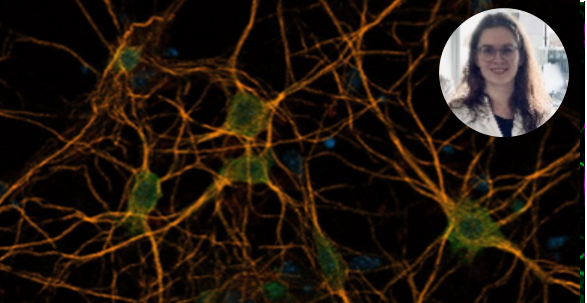
MORE ABOUT Sophie Schreiner
What drives her as a scientist, and where she sees herself in 5 years
“I was already interested in biology when I went to school, therefore I decided afterwards to progress my studies in the field of cell and molecular biology. My first involvement in pathological research occurred during an internship in my Bachelor`s. For this reason, I decided to write the master thesis at the LCNP with a focus on brain cancer; that`s when the brain started to fascinate me. In 5 years, I hope to contribute to translation of fundamental research into applications that can be used for NDD patients care.”
What she loves about science
“I like that no day is like another because of the diversity of this profession. And although our field of research seems very compact, it is almost impossible to draw a conclusion, because with every answered question, ten new questions are asked.”
On her research, peer to peer
“AD is the most prevalent NDD with targeted population of neurons undergoing degenerative changes, among others, due to the intracellular accumulation of abnormal hyperphosphorylated tau (pTau) which forms neurofibrillary tangles. One potential target in neuronal resilience is the complement protein 1 q (C1q), for which a potential correlation with the tangle maturation has been reported. Therefore, the project aims to elucidate the distribution and role of C1q in brain aging, exploring the relationship between cell death and synaptic loss in neurodegeneration, and investigating the interplay between the tauopathy and C1q. To address these questions, a protocol for culturing mouse primary neurons was developed, enabling the translational analysis of the molecular processes in an in-vitro model of observation in human tissue.”
A close look at the immunological mechanisms at play in Alzheimer’s
Mónica Miranda de la Maza, biologist and PhD researcher at Luxembourg Institute of Health (LIH), studies the interplay between microglia, astrocytes and peripheral immune cells in neuroinflammatory conditions in Alzheimer’s.
Chronic brain inflammation and impaired immunity play an important role in the neurodegenerative deterioration found in Alzheimer’s (AD) and several other neurodegenerative diseases.
“My project aims to decipher the interplay of astrocytes with microglia s and peripheral immune cells, such as, T-cells and perivascular macrophages, which will unveil how they regulate, or fail to regulate, together neuroinflammation in AD, new facets of neuroinflammation in AD and potentially open new therapeutic strategies to alleviate the progression of the disease.”
Thanks to a translational approach that combines mouse cell cultures, high-throughput technologies in single cell RNA sequencing, as well as high-resolution microscopy, it is possible to generate high-content data on the immunological mechanisms at play in Alzheimer’s.
“We hope that our applied research will help designing new treatments to alleviate disease progression in Alzheimer and related dementias.”
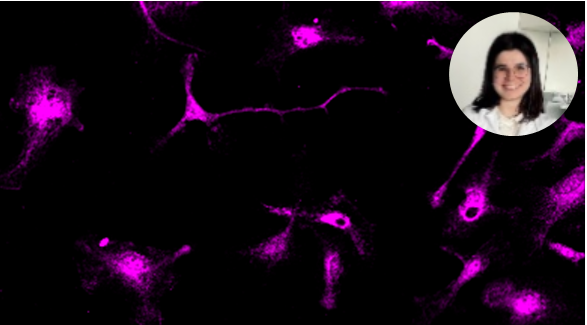
MORE ABOUT Mónica Miranda
What drives her as a scientist, and where she sees herself in 5 years
“As a scientist, my passion lies in unravelling uncertain aspects of the world and contributing with solutions.
“I chose this research group and institution because they align with my interests and offer opportunities for collaboration and growth. The freedom and diverse opportunities they provided instantly appealed to me, motivating my desire to join them. Their inclusive environment and flexibility resonated with my aspirations, driving me to become a part of their team. This experience solidified my commitment to pursuing research in this dynamic and enriching setting.
“In five years, I see myself continuing to pursue research, leveraging my expertise to address emerging challenges and mentor the next generation of scientists.”
What she loves about science
“One of the most appealing aspects of science and research is the thrill of exploration. There’s a genuine sense of satisfaction that comes from answering intriguing questions and piecing together the puzzle of how things work. But what really makes it special is the collaborative spirit that pervades the scientific community. Working alongside other curious minds, sharing ideas, and pooling expertise is both stimulating and rewarding. Ultimately, knowing that our discoveries may lead to advancements that benefit society adds a profound sense of purpose to our pursuit of knowledge.”
On her research, peer to peer
“Alzheimer’s disease, the prevalent age-related neurodegenerative disease, exhibits neuroinflammation and impaired immunity. Microglia, brain resident immune cells, are often considered as responsible for this pathological cascade. However, growing evidence shows the contribution of peripheral immune cells and astrocytes to the brain immune responses in AD. Astrocytes, mainly known for metabolic support to neurons, can secrete pro-inflammatory cytokines and alter the responses of surrounding microglia. Furthermore, CD8+ T-cells and perivascular macrophages can infiltrate brain parenchyma in neurodegenerative areas and derail inflammation.
Related highlights
Spotlight on Young Researchers: Unravelling the role of calcium signalling to overcome melanoma drug resistance
Cutaneous melanoma is the most serious type of skin cancer and the sixth most frequent cancer in Europe. Despite progress…
Read more
Spotlight on Young Researchers: Advancing sustainable land use
Industry, agriculture and waste disposal all cause soil pollution, a threat to both ecosystems and human health. Environmental scientists and…
Read more
Spotlight on Young Researchers: Toward greener AI
Deep learning has seen an explosive growth and as it is now being relied upon in areas such as healthcare,…
Read more
Spotlight on Young Researchers: Combining machine learning & life events data to predict depression
A high number of people experience experiences depression in older age. Factors such as childhood conditions, adult life trajectories, and…
Read more
Spotlight on Young Researchers: Probiotics to the rescue
Billions of living microorganisms live in the human gut microbiome. Research has shown that an imbalanced microbiome plays a role…
Read more
Spotlight on Young Researchers: How multilingualism impacts learning numbers and mathematics
In an increasingly multicultural and multilingual society – especially in Luxembourg – it is key to ensure an educational system…
Read more